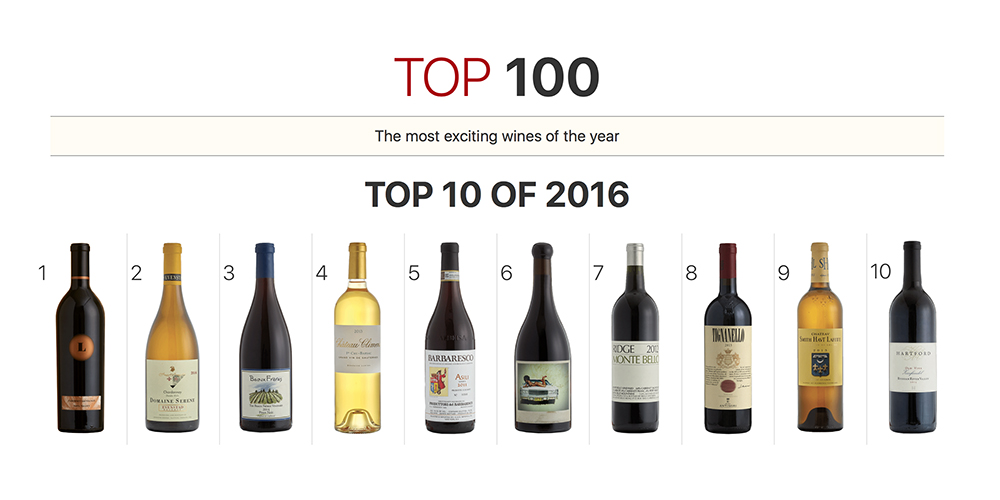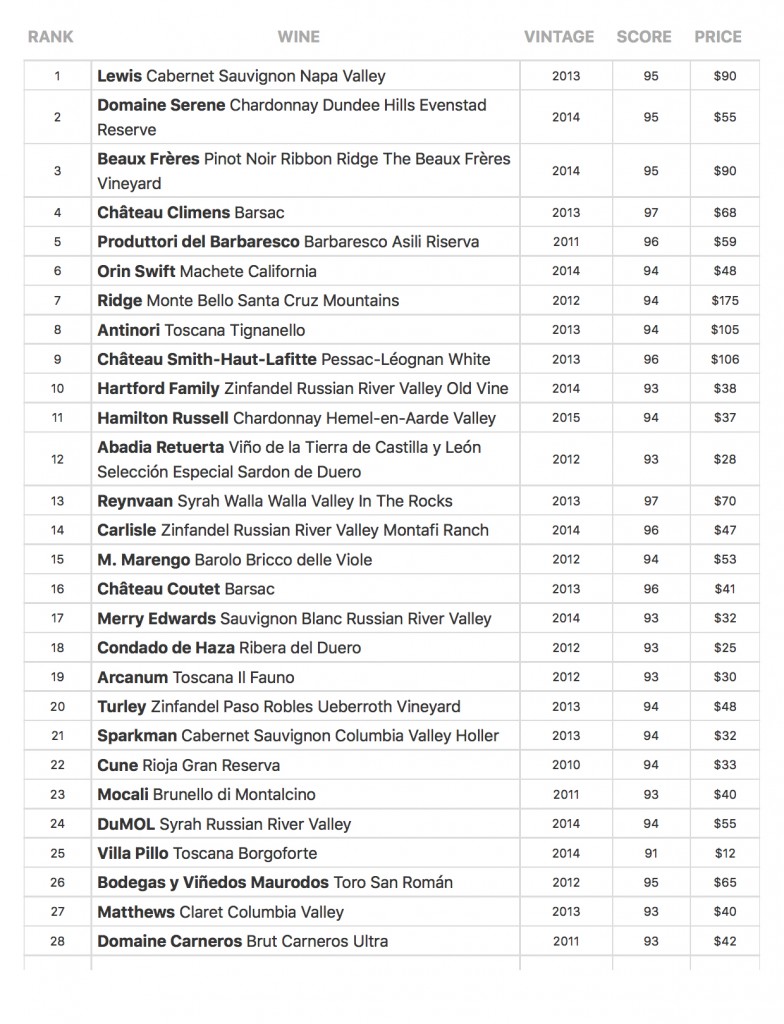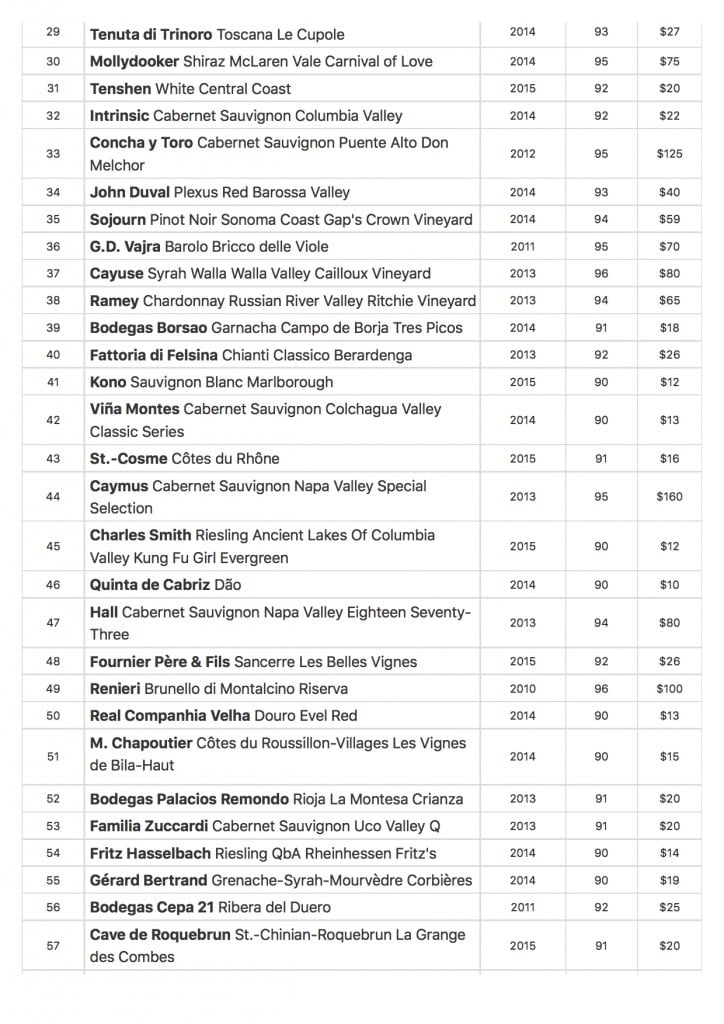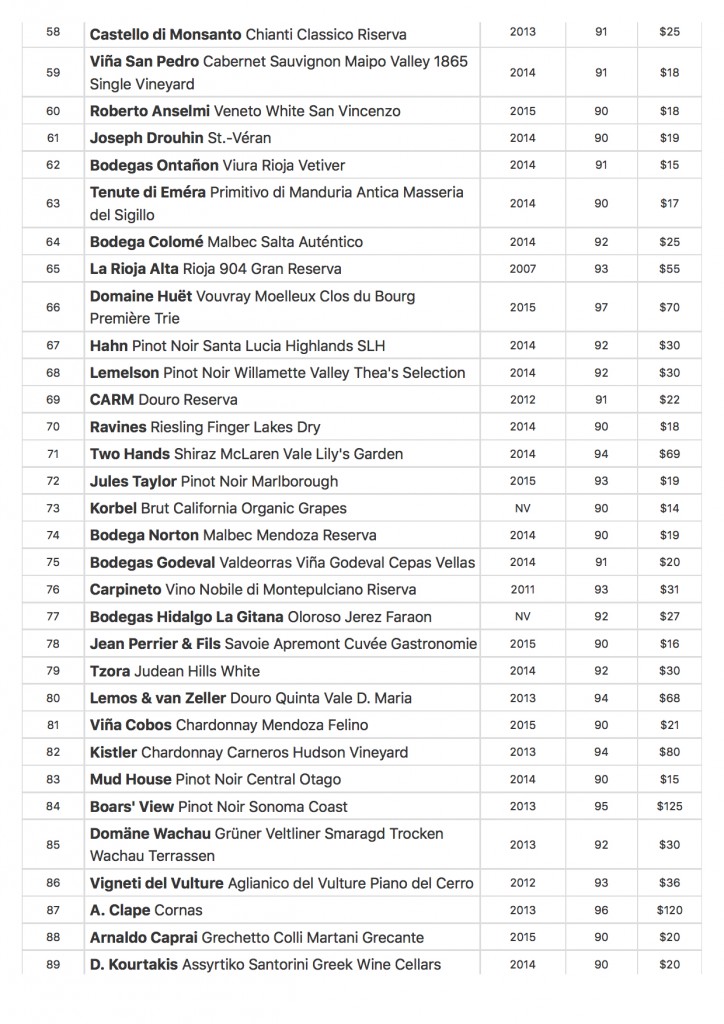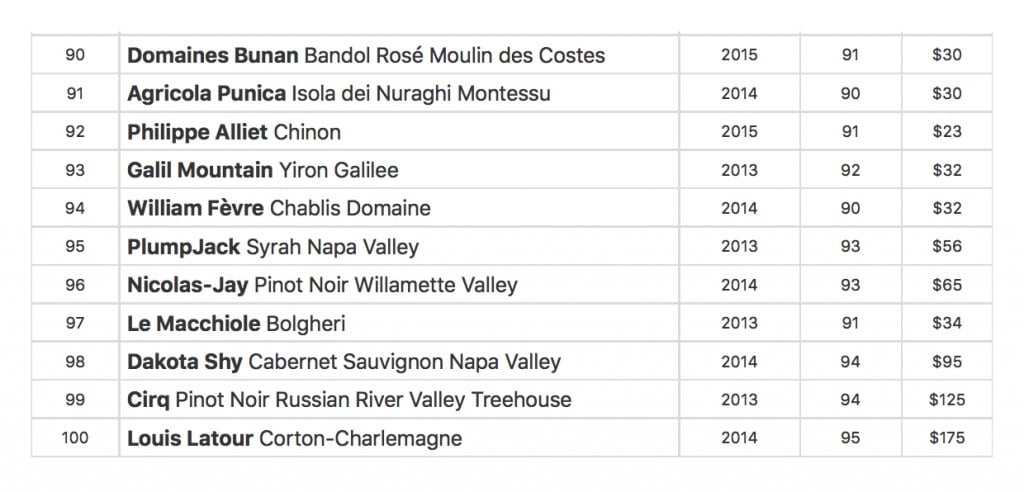(in calce la lista completa TOP100)
Il ruolo divulgativo svolto da Winespectator, la rivista del wine made in USA più stampata nel globo, è davvero meritevole. Fondata a San Diego nel 1976, pubblica 15 numeri l’anno per una tiratura di circa 400.000 copie.
Un’attività che indubbiamente sostiene la cultura del vino e il lifestyle “food & wine” internazionale.
C’è un momento, però, nel quale si resta basiti: è il momento della pubblicazione, con grande risalto da parte della stampa italiana, della lista dei TOP100, una classifica delle migliori cento etichette al mondo.
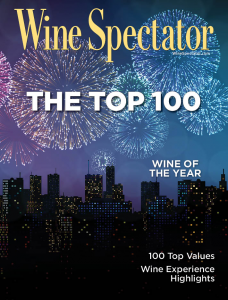 Quest’anno, forse complice Trump, la situazione è ancora più curiosa. In cima, sul podio dei primi tre, ci sono solo vini statunitensi: un Cabernet della Napa Valley; uno Chardonnay dell’Oregon; e un Pinot Nero dell’Oregon.
Quest’anno, forse complice Trump, la situazione è ancora più curiosa. In cima, sul podio dei primi tre, ci sono solo vini statunitensi: un Cabernet della Napa Valley; uno Chardonnay dell’Oregon; e un Pinot Nero dell’Oregon.
Basta una media cultura del vino per accendere sinceri dubbi, forse riconducibili a giovanile entusiasmo, che non si limitano alla semplice valutazione, ma che riguardano il metodo e l’opportunità.
Sembra, estremizzo, che lo shampoo alle mele sia più buono delle mele stesse; o l’arbre magique più gradevole di una passeggiata in una pineta. A questo si aggiunga un problema di metodo che riguarda i cambiamenti, la trasformazione di un prodotto capace sfidare il tempo, poco considerando la storia della cantina. Tanto è vero che alcune aziende non risultano ad altra autorevole stampa anglosassone.
I giudizi glissano sulla storia delle cantine e sulle interpretazioni di territorio. E’ come valutare un bambino a 3 anni di età; e non, invece, alla fine del suo percorso di studi o dell’attività lavorativa. O peggio, invitare ad una gara di lettura della Divina Commedia di Dante un tedesco ed un greco. Qualcosa non torna.
Tuttavia, esiste un destino che salverebbe questa nota classifica: un destino focalizzato solo al pubblico e al mercato USA. Per l’Italia e per l’Europa risulta infatti illegibile. I vini made in USA, si noti, non arrivano e non sono distribuiti in Italia e in Europa. Il confronto è impossibile.
In conclusione, non mi riscaldo e faccio spallucce. Ai giornalisti e colleghi impegnati nella comunicazione del vino dico di mollare questa inutile classifica. Al vecchio continente manca una testata o un organismo autorevole che metta tutto in riga e forse non è nemmeno un caso.
Altra storia, invece, è la lista “OperaWine”, l’evento – sempre targato Winespectator – che apre il Vinitaly di Verona e che individua le 104 cantine più rappresentative d’Italia. Ci sono undici Barolo (Conterno, Cavallotto, Damilano, Cogno, Giacosa, G. Mascarello, Sandrone, Massolino, Scavino, Ratti, Vietti); tre Barbaresco (Produttori di Barbaresco, Gaja, Ceretto); dieci Brunello di Montalcino (Altesino, Biondi Santi, Casanova di Neri, Banfi, Poggione, Frescobaldi, Mastrojanni, San Felice, Pacenti, Valdicava); sette Amarone (Cesari, Allegrini, Bertani, Masi, Tedeschi, Tommasi, Zenato); poi il resto d’Italia, sino alla Sicilia con sei vini (Cusumano, Planeta, Donnafugata, Tasca d’Almerita, T. delle Terre Nere, Morgante).
Il vigneto Italia segue il criterio della griffe o della firma, ma è comunque più leggibile, più rappresentato. Sulla classifica TOP100 abbiamo poco da aggiungere. Restiamo con Ulpiano fermi ad uno tra i principali precetti del diritto romano: “Unicuique suum”. Ci complimentiamo con la cantina Produttori di Barbaresco per aver conquistato il quinto posto assoluto in una classifica così orientata; e con Antinori per il Tignanello 2013, un blend Sangiovese, Cabernet Sauvignon e Cabernet Franc, un supertuscan che riporta all’eredità creativa dello scomparso Giacomo Tachis.
Per altri dettagli rimandiamo all’esaustivo articolo di Luciano Ferraro sul Corriere della Sera: http://divini.corriere.it/2016/12/04/wine-spectator-i-migliori-104-ditalia
e naturalmente alla pagina TOP100 dello stesso magazine Winespactator:
http://top100.winespectator.com/top-10-wine-reveal-2016
Le note ai vini di WineSpectator (vedi sito):
1. Lewis Cabernet Sauvignon Napa Valley 2013
Remarkably elegant and refined for a wine of this size and depth, with tiers of plum, blackberry and currant flavours, as well as subtle touches of black liquorice that remain pure and graceful on the long, lingering aftertaste. Drink now through 2028.
2. Domaine Serene Chardonnay Dundee Hills Evenstad Reserve 2014
Focused and expressive, this is layered with wet stone, tangy citrus, pear and green guava flavours that swirl through an expansive finish, gaining momentum and extra dimensions with each sip. Drink now through 2024.
3. Beaux Frères Pinot Noir Ribbon Ridge The Beaux Frères Vineyard 2014
Supple, expressive and multilayered, exhibiting flavours of plum, currant, pomegranate and violet that come together harmoniously, persisting into the long and exceptionally well-balanced finish. Drink now through 2024.
4. Château Climens Barsac 2013
There’s loads here, with apricot, nectarine and clementine flavours stitched with a racy orange zest note to give energy, while tropical papaya and mango flavours add a sublimely creamy edge. The finish sails on and on, coating the palate with a porcelain feel, while an echo of bitter almond lingers effortlessly, like a lace curtain hanging on an endless breeze. Stunning. Best from 2018 through 2043.
5. Produttori del Barbaresco Barbaresco Asili Riserva 2011
Intense aromas of cherry, rose, liquorice and tar pick up tobacco, spice and mineral elements on the palate. Concentrated, yet elegant and expressive, with more to give. Ends with a long aftertaste of fruit, underbrush and mineral. Best from 2018 through 2032.
6. Orin Swift Machete California 2014
Generous and expressive, big and brawny, this offers a mouthful of tannins but also brims with flavours and aromas, including Earl Grey tea, dark chocolate, dried violet and toasted gingerbread. Rich notes of plum and black cherry are balanced by forest floor and earth accents, which linger on the long finish. Petite Sirah, Syrah and Grenache. Drink now through 2030.
7. Ridge Monte Bello Santa Cruz Mountains 2012
A beautifully structured wine, with firm acidity and tannins that show grip and grit amid a core of dense, tense currant and blackberry fruit, turning juicy. Those seeking classic old-school Cabernet will embrace this. Cellaring for five to seven years is the right approach. Cabernet Sauvignon, Merlot, Cabernet Franc and Petit Verdot. Best from 2020 through 2035.
8. Antinori Toscana Tignanello 2013
Aromas of graphite, smoke and tobacco introduce the cherry flavour in this expressive, focused red. Firm tannins and lively acidity balance the fruit and purity, while herbal, spice and mineral elements all gather steam as this plays out on the long finish. Sangiovese, Cabernet Sauvignon and Cabernet Franc. Best from 2017 through 2027.
9. Château Smith-Haut-Lafitte Pessac-Léognan White 2013
This has a gorgeous feel, with opulent fruit offset by racy herb notes and acidity, showing lemon sherbet, shortbread and white peach flavours backed by a salted butter– and tarragon-laced finish, with hints of talc and fennel skittering in the background. Seriously long and still a touch youthful on the finish, this is one for the cellar. Sauvignon Blanc, Sauvignon Gris and Semillon. Best from 2017 through 2023.
10. Hartford Family Zinfandel Russian River Valley Old Vine 2014
Plump and fleshy, with a dense core of focused tannins and lively acidity. Aromas of ripe black raspberry, anise and liquorice open to layered, slightly jammy flavours of black cherry, blueberry pie and smoky cracked pepper. Drink now through 2024.
La lista completa


